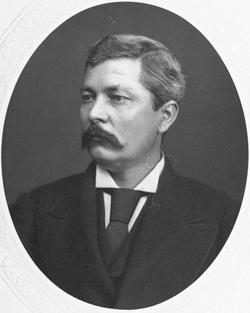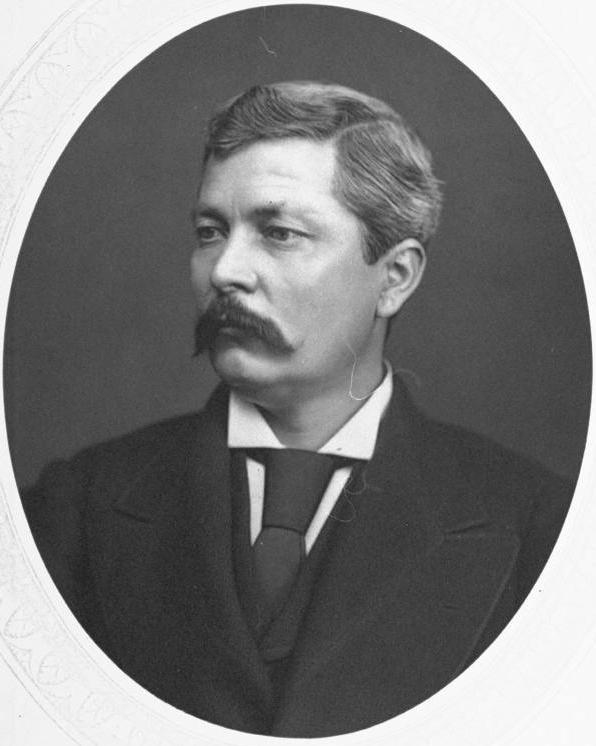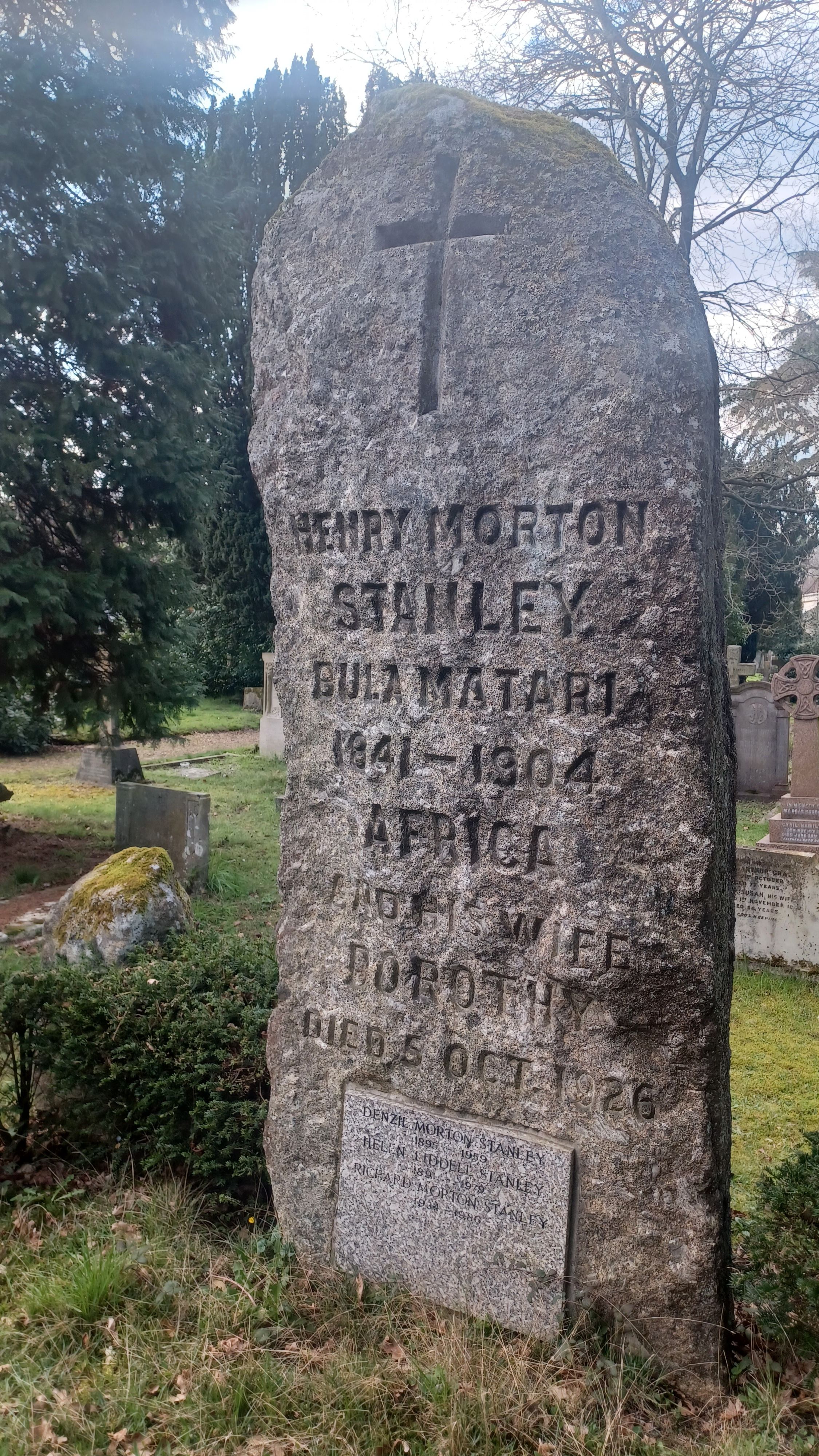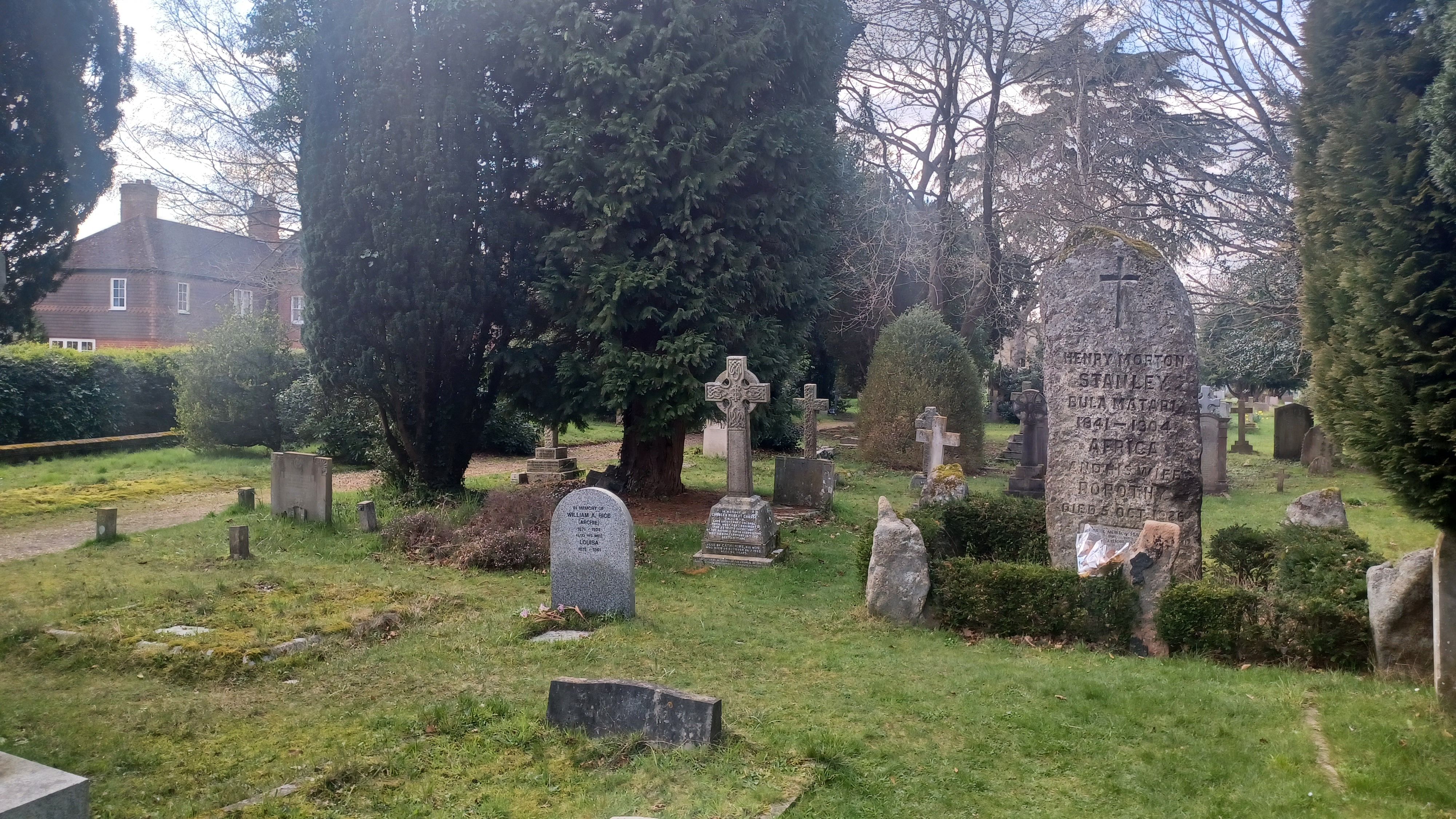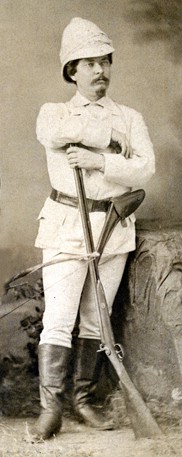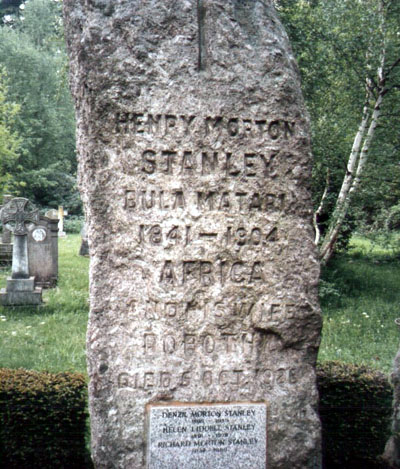Explorer, Journalist. He is remembered, as a Welsh-born American journalist, for his renowned question, "Dr. Livingstone, I presume?" which was asked upon locating Scottish missionary Dr. David Livingstone in Africa. Born out-of-wedlock to a teenaged girl as John Rowlands, he was placed in the care of his grandfather at a young age. After his grandfather's death, his life was pure destitute as he spent the remaining years of his childhood in a workhouse. As a seventeen-year-old cabin boy on a ship, he left Britain for the United States, settling in New Orleans. Wanting to start a new life, he changed his name to Henry Morton Stanley. In 1861 the American Civil War began and he enlisted in the Confederate Army, serving in the 6th Arkansas Infantry, fighting at the Battle of Shiloh on April 6, 1862, and being captured by the Union Army. While in a Prisoner of War camp, he enlisted in the Union Army. Within two weeks, he was physically ill and deserted in 1863. He joined the United States Navy, serving as a clerk on the frigate "Minnesota," but eventually deserted. Heading for the Wild West, he began his journalism career as a free-lance correspondent for newspapers, reporting on the many battles and skirmishes of the United States Army with the Native Americans. Leaving the United States, he traveled as a newspaper correspondent, reporting on Lord Robert Napier's expedition of 1868 against Emperor Tewodros II of Ethiopia, which was known at that time as Abyssinia, documenting the looting of many historical and religious artifacts, which were taken to Britain. He traveled to Turkey, Asia Minor and Egypt, reporting on the opening of the Suez Canal to various newspapers including the "New York Herald." In October of 1869, Stanley accepted the assignment from the editor of the "New York Herald" to lead an expedition of a small army to "Find Livingstone," the Scottish missionary in Africa. This 700-mile expedition through the tropical forest, resulted in Stanley finding the elderly and ailing Dr. Livingstone in November of 1871. His diaries of this trip were published in newspapers worldwide as well as in the "Encyclopedia Britannica" and "Oxford Dictionary of National Biography." In 1873 Stanley was one of the pall-bearers at Livingstone's funeral, and was presented with the Royal Geographical Society's Gold Medal for Patrons "For his Relief of Dr. Livingstone, and for bringing his valuable journal and papers to England." In 1874 he returned to Africa, researching on the Congo and Nile River systems and discovering the Shimeeyu River in a grueling 7,000-mile expedition. This led to King Leopold II of Belgium employing Stanley to "prove that the Congo basin was rich enough to repay exploration". From this trip, the Congo Free State was formed in 1885, which allowed Belgium to extract minerals, ivory, and rubber. He became a naturalized United States citizen on May 15, 1885. Stanley's third African adventure from 1887 to 1889 is still the subject of much controversy even in the 21st century. Funded by the Egyptian government, Stanley headed the Emin Pasha Relief Expedition, which was a humanitarian rescue during a civil uprising of Dr. Pasha, a European, who became the German governor of what is now South Sudan. After arriving to the Congo, a European, who had been a member of Stanley's expedition, was allegedly involved in the inhuman act of purchasing a native child for Cannibalism. At the time of the incident, Stanley was miles away on a six-month long exploration in darkest Africa. The European member died of a fever before Stanley's return. This incident received international media coverage in the 19th century and impacting Stanley's life. By 1890 Stanley had settled in England, although he did spend months in the United States, Germany, and Australia on lecture tours. He married an artist of the Victorian neoclassicism era, Dorothy Tennanon, on July 12, 1890 and the couple adopted a son, who was a distant cousin of Stanley's. Although he was an American during his famous African explorations, he was reinstated as a British subject in 1892. He was made a Knight Grand Cross of the Order of Bath in 1899, in recognition of his service to the British Empire in Africa. Following his knighthood, Stanley sat as a Unionist Member of Parliament representing Lambeth from 1895 to 1900. He wanted to be buried in Westminster Abbey near Dr. Livingstone, but permission was not granted with the dark cloud of the African atrocities tainting his name. He published at least four books on his adventures, but it was Lady Stanley, who published his "Autobiography of Sir Henry Morton Stanley" in 1909.
Explorer, Journalist. He is remembered, as a Welsh-born American journalist, for his renowned question, "Dr. Livingstone, I presume?" which was asked upon locating Scottish missionary Dr. David Livingstone in Africa. Born out-of-wedlock to a teenaged girl as John Rowlands, he was placed in the care of his grandfather at a young age. After his grandfather's death, his life was pure destitute as he spent the remaining years of his childhood in a workhouse. As a seventeen-year-old cabin boy on a ship, he left Britain for the United States, settling in New Orleans. Wanting to start a new life, he changed his name to Henry Morton Stanley. In 1861 the American Civil War began and he enlisted in the Confederate Army, serving in the 6th Arkansas Infantry, fighting at the Battle of Shiloh on April 6, 1862, and being captured by the Union Army. While in a Prisoner of War camp, he enlisted in the Union Army. Within two weeks, he was physically ill and deserted in 1863. He joined the United States Navy, serving as a clerk on the frigate "Minnesota," but eventually deserted. Heading for the Wild West, he began his journalism career as a free-lance correspondent for newspapers, reporting on the many battles and skirmishes of the United States Army with the Native Americans. Leaving the United States, he traveled as a newspaper correspondent, reporting on Lord Robert Napier's expedition of 1868 against Emperor Tewodros II of Ethiopia, which was known at that time as Abyssinia, documenting the looting of many historical and religious artifacts, which were taken to Britain. He traveled to Turkey, Asia Minor and Egypt, reporting on the opening of the Suez Canal to various newspapers including the "New York Herald." In October of 1869, Stanley accepted the assignment from the editor of the "New York Herald" to lead an expedition of a small army to "Find Livingstone," the Scottish missionary in Africa. This 700-mile expedition through the tropical forest, resulted in Stanley finding the elderly and ailing Dr. Livingstone in November of 1871. His diaries of this trip were published in newspapers worldwide as well as in the "Encyclopedia Britannica" and "Oxford Dictionary of National Biography." In 1873 Stanley was one of the pall-bearers at Livingstone's funeral, and was presented with the Royal Geographical Society's Gold Medal for Patrons "For his Relief of Dr. Livingstone, and for bringing his valuable journal and papers to England." In 1874 he returned to Africa, researching on the Congo and Nile River systems and discovering the Shimeeyu River in a grueling 7,000-mile expedition. This led to King Leopold II of Belgium employing Stanley to "prove that the Congo basin was rich enough to repay exploration". From this trip, the Congo Free State was formed in 1885, which allowed Belgium to extract minerals, ivory, and rubber. He became a naturalized United States citizen on May 15, 1885. Stanley's third African adventure from 1887 to 1889 is still the subject of much controversy even in the 21st century. Funded by the Egyptian government, Stanley headed the Emin Pasha Relief Expedition, which was a humanitarian rescue during a civil uprising of Dr. Pasha, a European, who became the German governor of what is now South Sudan. After arriving to the Congo, a European, who had been a member of Stanley's expedition, was allegedly involved in the inhuman act of purchasing a native child for Cannibalism. At the time of the incident, Stanley was miles away on a six-month long exploration in darkest Africa. The European member died of a fever before Stanley's return. This incident received international media coverage in the 19th century and impacting Stanley's life. By 1890 Stanley had settled in England, although he did spend months in the United States, Germany, and Australia on lecture tours. He married an artist of the Victorian neoclassicism era, Dorothy Tennanon, on July 12, 1890 and the couple adopted a son, who was a distant cousin of Stanley's. Although he was an American during his famous African explorations, he was reinstated as a British subject in 1892. He was made a Knight Grand Cross of the Order of Bath in 1899, in recognition of his service to the British Empire in Africa. Following his knighthood, Stanley sat as a Unionist Member of Parliament representing Lambeth from 1895 to 1900. He wanted to be buried in Westminster Abbey near Dr. Livingstone, but permission was not granted with the dark cloud of the African atrocities tainting his name. He published at least four books on his adventures, but it was Lady Stanley, who published his "Autobiography of Sir Henry Morton Stanley" in 1909.
Bio by: Linda Davis
Family Members
Advertisement
See more Stanley memorials in:
Advertisement
